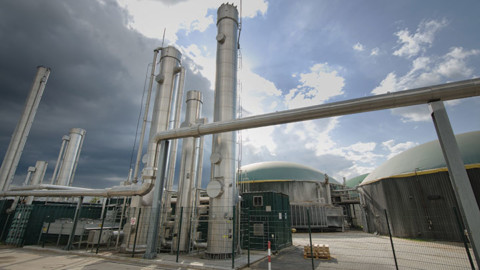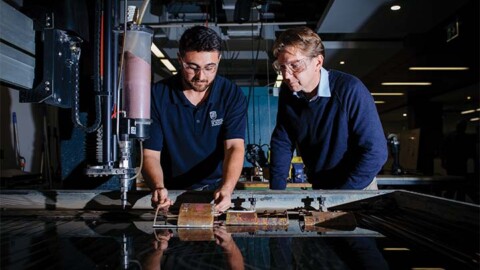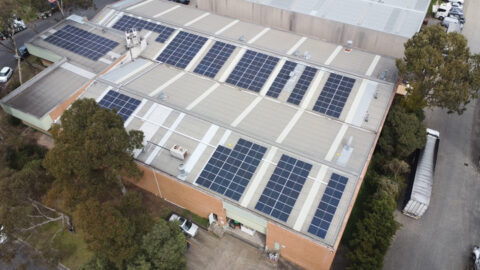The Australian Energy Market Commission (AEMC) is calling on Australia’s brightest academics to collaborate with the rule-maker to develop more ‘pilot-to-policy’ approaches to ensure their research contributes quickly and effectively to the energy transformation.
In a keynote speech delivered to the ERICA – the State of Energy Research Conference at the University of Technology Sydney, the AEMC’s Chief Executive, Benn Barr, outlined specific areas of research his team has identified as being critical to the evolution of the energy sector over the coming decades to 2050.
Fundamental research themes
According to Mr Barr, the AEMC has a complex, interrelated and interdependent work program, so priorities need to be organised into themes that keep the organisation focused on the bigger picture. Currently, those themes are transformation, resilience, and innovation.
Mr Barr went on to outline the research required within the three key themes the AEMC is working towards. In the context of Transformation, the research AEMC most needs is around consumer behaviour. In particular, the AEMC is looking for research to help better understand consumers’ future interactions with energy and technology.
According to Mr Barr, “We have to always keep in sight: the transformation won’t happen unless it works for the users of energy. The users of energy are real – we are real – and many of our decisions at the AEMC rely on understanding human responses to energy market changes.”
Mr Barr noted that AEMO’s roadmap, the Integrated System Plan from 2022, relies on an active demand-side market and consumer resources that can be orchestrated across the network.
However, so much is still based on ‘best guesses’ of how human behaviour can help transform the power system. For instance, electric vehicles (EVs). While the energy industry may want EVs to behave as battalions of mobile batteries, will consumers really behave that way once there are enough EVs in the market to make a difference? What would drive users to turn their car to the service of the grid while it’s idle?
Some areas the AEMC has been aiming to facilitate ongoing consumer engagement with the market include the work surrounding the Wholesale Demand Response mechanism, as well as upcoming work on Unlocking CER Benefits through flexible trading. These projects are providing the groundwork for more effective consumer interaction with the market.
The second theme the AEMC is working on is Resilience. In this realm, there’s no greater research need than helping the AEMC learn how to operate a power system with 95 to 100 per cent variable renewables and no big spinning machines. Right now, the system is dominated by variable renewables.
In Q4 of 2022, renewables provided more power to the NEM than black coal. But we’ve never operated a grid with a scarcity of big spinning machines, and the AEMC needs research that builds our confidence and capabilities. Essential system services (ESS) is a very large area, but as an example, recent trials of returning or ‘tweaking’ of inverters have been helpful to the AEMC’s work.
ARENA has supported a lot of research in this area and recently released power system CAD reports that have provided useful assessments of grid-forming batteries. The AEMC is also participating in ARENA’s dynamic operating envelopes workstream group, aiming to improve consumer energy resources integration into the grid.
Another resilience area the AEMC needs to know more about is the role of storage short and long-term in a fully renewable power system. The ISP says storage capacity must jump 30-fold, from 2GW now to 15GW in 2030 and over 60GW in 2050. As a result, the AEMC is very interested in the future role of domestic and community batteries in this space.
A recent paper from AEMC economists suggests the affordability turning point for domestic batteries is a lot closer than most people – who equate batteries with Tesla – would think. Under the third theme of Innovation, Mr Barr said the critical focus area here is on new concepts and tech that will lighten the massive construction schedule in front of the industry. Mr Barr called on researchers to share anything they can discover or devise to help more efficiently and effectively reduce the amount of ‘stuff’ the industry needs to build by 2050.
“What’s on the plan right now is like the moonshot plus the Manhattan Project,” Mr Barr said.
“Add WW2 reconstruction to the scope of the work, and you’re getting close to the magnitude of the energy transformation in Australia.
“So much to build in such a short time. Storage capacity needs to grow, and then there’s the goal of distributed solar PV doubling by 2030 and doubling again by 2050 to about 70GW. And of course, the massive poles and wires build: around $14 billion is estimated just for new transmission infrastructure. “It’s a mammoth task.
However, we’re starting to get a sense that the more confident we become in managing a high VRE system, the less we may have to build. For instance, if we can be certain that tweaking inverters will give us the system strength we need, we may then need fewer back-up options.
“Research into innovations that save us time, materials and dollars during this enormous construction phase will be welcomed by governments and the market, and will pay lasting dividends to consumers – that is, we humans who will, ultimately, be paying for it all.”
The biggest opportunity of all
However, as pressing as the need for research in all of these three areas is, according to Mr Barr, the biggest opportunities for research in the next ten years are likely to be in what may seem the least exciting area – the institutional space. While more technological innovation is expected and welcome today, and for the next few years, the industry does already have substantial apparatus in place to help achieve carbon-abatement goals and redefine the power systems of the past.
“But barriers exist when it comes to deploying this apparatus at scale and in a way that presents solutions that are sustainable, fit-for-purpose, and equitable,” Mr Barr said.
“So – the greatest gains the next decade of research can offer might not be in technology, but in the ‘missing link’ between trials and deployment.
“We need to work on ways to successfully deploy the technological and social change necessary to meet our goals in time. We need research into real-world implementation via public policy, regulatory frameworks, effective institutions, financing schemes, social licence, and equitable access to efficient energy.
“This means less emphasis on the questions around ‘What must be done?’ and more on ‘How quickly can we make it happen?’ and ‘How do we make sure it beds down and keeps working?’ “The energy sector has to move fast. Governments across Australia are largely aligned and keen to act. This means that the most successful research projects of any kind in the next decade will have their transition to policy ‘baked in’ from the start.
A ‘pilot-to-policy’ approach will be one of the smartest ways to ensure your research contributes quickly and effectively to the energy transformation.”
Collaborative success
As part of the call to arms for the research sector of the energy industry, Mr Barr asked its members to consider their relationship with the AEMC and other market bodies in their research plans.
“We’re calling for more work on pilot-to-policy approaches to increase likelihood of deployment; and we also urge that more research considers what structures are needed to plug the new learning from successful trials into the energy markets via rules, investment and consumer attitudes,” Mr Barr said.
“We’re also keen to see more focus on cross-pollination of motives and ideas between regulators and researchers for mutual benefit and efficiency.” With the task ahead of the industry in the decades to come nothing short of mammoth, the AEMC’s guidance should provide a useful steer in getting the industry from research to market for the raft of technology required that little bit faster.

















